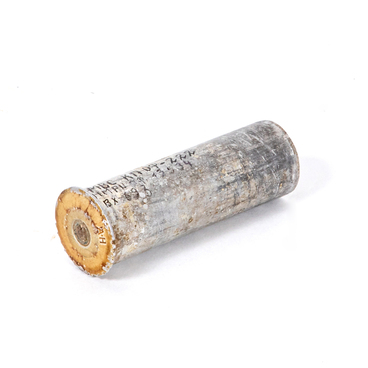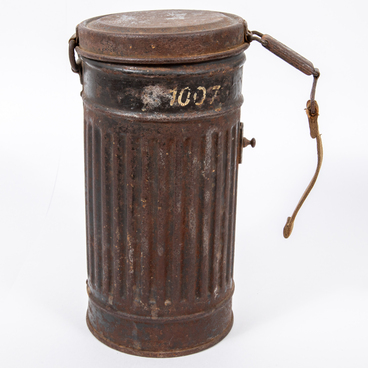The Soviet badge ‘Guards’ is oval-shaped and framed by a laurel wreath, the upper part of which is covered by an unfolded red banner. Golden letters are stamped onto it — ‘Guards’, and a red five-pointed star on a white field is depicted in the middle of the wreath. A relief inscription ‘USSR’ on a shield is in the lower part of the breastplate.
Elite military units have existed since the antient times: for example, the praetorian guards in ancient Rome, the corps of ‘immortal’ bodyguards of the Persian King Darius I, and others. In Russia, the Leibgarde (the Life-Guard) appeared during the reign of Peter I. It was organized on the basis of Peter’s former toy army (so called amusement forces) — Preobrazhensky and Semenovsky Regiments of the Guard. These regiments accompanied the monarch on his military campaigns, and in peacetime were located in the capital.
In the Workers’ and Peasants' Red Army, Guards units appeared at the very beginning of World War II. From July 10 to September 10, 1941, during the Smolensk strategic defensive operation, the Red Army managed to disrupt the German ‘Lightning War’ strategy to take Moscow. Not far from Smolensk, the Wehrmacht soldiers were ordered by Adolf Hitler for the first time to go from an offensive to a defensive plan. The 100th, the 127th, the 153rd, and the 161st Rifle Divisions distinguished themselves in the battle. For the heroism and courage, they had shown, on September 18, 1941, by decision of the Headquarters of the Supreme High Command, by order of the People’s Commissar of Defense of the USSR Joseph Stalin No. 308, these four rifle divisions were transformed into the 1st, 2nd, 3rd, and 4th Guards.
To affirm the status of the guards, it was necessary to distinguish them among the rest of the fighters. It was impractical to create a new form during the war, so in April 1942 artist Sergey Dmitriev was instructed to develop a special breastplate. Stalin personally chose one of the sketches, and on May 21, 1942, the Presidium of the Supreme Soviet of the USSR made the ‘Guards’ badge official.
From 1941 to 1945, many regiments were awarded Guards designations: 11 combined arms and 6 tank armies, rifle, cavalry, tank, mechanized and aviation corps, many divisions and units of almost all types and branches of the troops.
Commanders presented the ‘Guards’ badge to each soldier personally in a solemn atmosphere in front of their formation. The badge was supposed to be worn on the right side of the chest on all uniforms, except for the work-clothes.
Elite military units have existed since the antient times: for example, the praetorian guards in ancient Rome, the corps of ‘immortal’ bodyguards of the Persian King Darius I, and others. In Russia, the Leibgarde (the Life-Guard) appeared during the reign of Peter I. It was organized on the basis of Peter’s former toy army (so called amusement forces) — Preobrazhensky and Semenovsky Regiments of the Guard. These regiments accompanied the monarch on his military campaigns, and in peacetime were located in the capital.
In the Workers’ and Peasants' Red Army, Guards units appeared at the very beginning of World War II. From July 10 to September 10, 1941, during the Smolensk strategic defensive operation, the Red Army managed to disrupt the German ‘Lightning War’ strategy to take Moscow. Not far from Smolensk, the Wehrmacht soldiers were ordered by Adolf Hitler for the first time to go from an offensive to a defensive plan. The 100th, the 127th, the 153rd, and the 161st Rifle Divisions distinguished themselves in the battle. For the heroism and courage, they had shown, on September 18, 1941, by decision of the Headquarters of the Supreme High Command, by order of the People’s Commissar of Defense of the USSR Joseph Stalin No. 308, these four rifle divisions were transformed into the 1st, 2nd, 3rd, and 4th Guards.
To affirm the status of the guards, it was necessary to distinguish them among the rest of the fighters. It was impractical to create a new form during the war, so in April 1942 artist Sergey Dmitriev was instructed to develop a special breastplate. Stalin personally chose one of the sketches, and on May 21, 1942, the Presidium of the Supreme Soviet of the USSR made the ‘Guards’ badge official.
From 1941 to 1945, many regiments were awarded Guards designations: 11 combined arms and 6 tank armies, rifle, cavalry, tank, mechanized and aviation corps, many divisions and units of almost all types and branches of the troops.
Commanders presented the ‘Guards’ badge to each soldier personally in a solemn atmosphere in front of their formation. The badge was supposed to be worn on the right side of the chest on all uniforms, except for the work-clothes.

